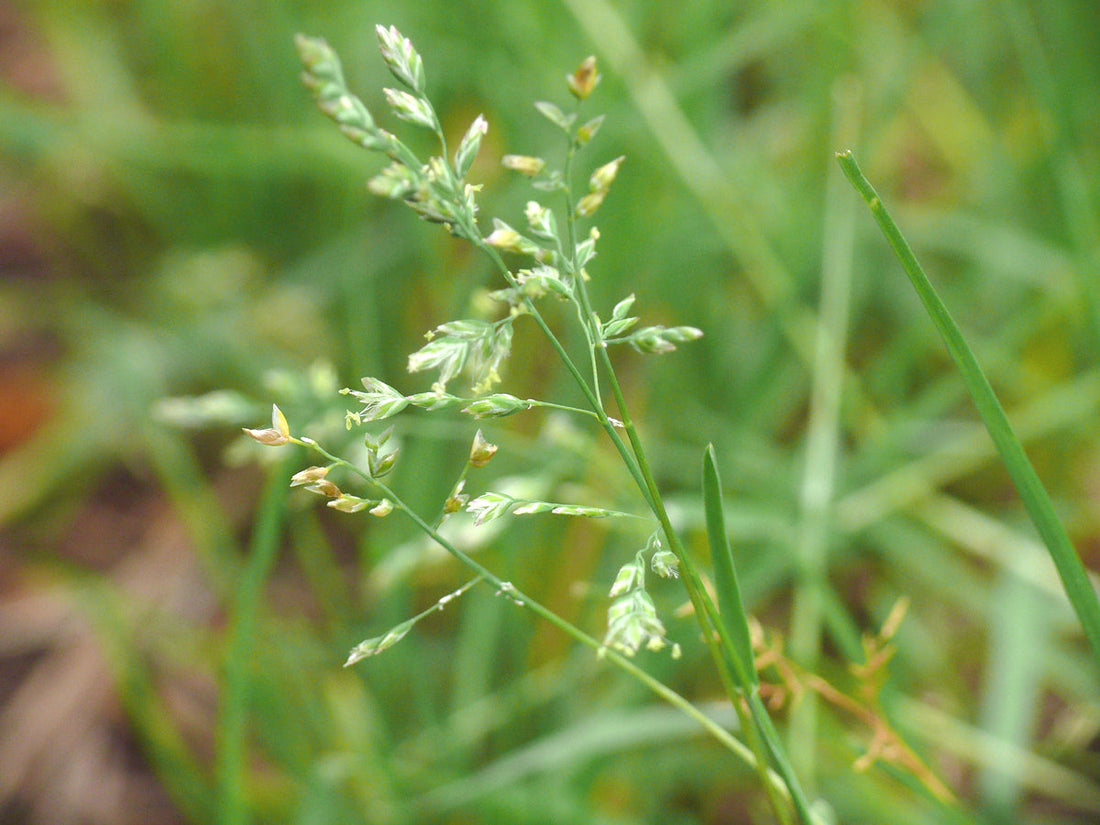A weed is anything you don't want in your lawn. A beautiful healthy lawn is a source of pride for any homeowner. However, an unwanted intruder known as POA Annua can disrupt the beauty of your lawn. This pesky weed is a common problem faced by many garden enthusiasts. In this blog we will explore what POA Annua is, why it's detrimental to your lawn and most importantly how to effectively deal with it using the powerful technique of verticutting.
Understanding POA Annua: POA Annua, also known as annual meadow grass is a type of grassy weed that can quickly invade your lawn. It thrives in cool-season grasses particularly in regions with mild winters. POA Annua has a distinctive appearance with light green fine-textured leaves. It tends to form patches or clumps and its seeds spread easily making it a persistent and troublesome weed.
The Problem with POA Annua: While POA Annua may appear harmless it poses several challenges for someone who is a perfectionist who cares about the aesthetics of their lawn. Here are a few reasons why it's considered a nuisance:
-
Weakness and Poor Aesthetics: POA Annua has a weaker root system compared to other grass species making it susceptible to drought and heat stress. It also has a different growth pattern causing an uneven look in your lawn.
-
Rapid Germination and Spreading: The seeds of POA Annua can germinate quickly especially during the Autumn and spring seasons leading to the formation of dense patches. Its prolific seed production and ability to spread through lawn equipment make it difficult to control.
-
Seasonal Discoloration: POA Annua tends to turn brown as the temperature rises in summer creating unsightly brown spots amidst an otherwise green lawn.

Dealing with POA Annua: The Power of Verticutting
When it comes to combating POA Annua one highly effective technique is verticutting. Verticutting involves using a specialised machine called a verticutter or if you are lucky enough to own an Allett then we have a Verticut cartridge available you can put in your mower in place of the cutting cylinder. Here's why verticutting is a great way to tackle POA Annua:
-
Thatch Removal: Thatch, the accumulation of dead grass, roots, and debris, provides an ideal environment for POA Annua to thrive. Verticutting cuts through this layer allowing better air circulation, water penetration, and reducing the weed's ability to establish itself.
-
Disruption of Seed Heads: Verticutting breaks up the seed heads of POA Annua preventing the weed from reproducing and spreading further. This disruption is crucial in controlling the weed's population and minimising future infestations.
-
Encourages Healthy Grass Growth: By removing thatch and facilitating better nutrient absorption verticutting promotes the growth of your desired grass species. Stronger, healthier grass is more resistant to weeds like POA Annua as it ultimately competes with it.
Steps to Verticut and Rejuvenate Your Lawn: Now that you understand the importance of verticutting let's outline the steps to effectively tackle POA Annua and rejuvenate your lawn:
-
Choose the Right Time: Perform verticutting during the early spring or Autumn when cool-season grasses are actively growing. Avoid hot summer months as this can stress the lawn.
-
Mow Your Lawn: Begin by mowing your lawn slightly shorter than usual to make it easier to penetrate the thatch layer.
-
Verticut the Lawn: Use the verticut cartridge to make vertical cuts into the sward breaking up the thatch layer. Ensure the blades penetrate deep enough to reach the roots of POA Annua.
-
Remove Debris: Collect the debris and thatch produced by verticutting. This prevents the accumulation of dead material and allows new grass shoots to emerge.
-
Overseed and Fertilise: After verticutting overseed the lawn with desirable grass seed to fill in any bare patches. Apply a suitable fertiliser to promote healthy growth and recovery. If you have the Allett cartridge system you can use the verticut cartridge at a higher setting just to tackle the weeds on the surface so you won't need to reseed after.
-
Water and Maintain: Water the lawn adequately to support germination and establishment of new grass. Follow proper lawn maintenance practices such as regular watering, mowing, and fertilisation to keep your lawn healthy and prevent future weed problems.

